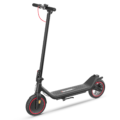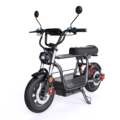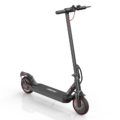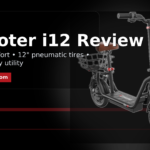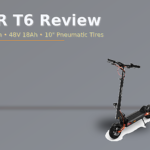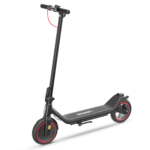- Home
- Scooters
- Electric Scooters
- iScooter i12
iScooter i12
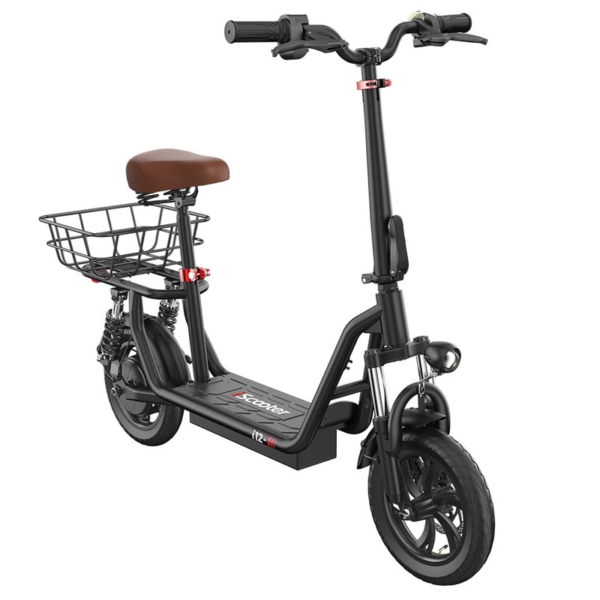


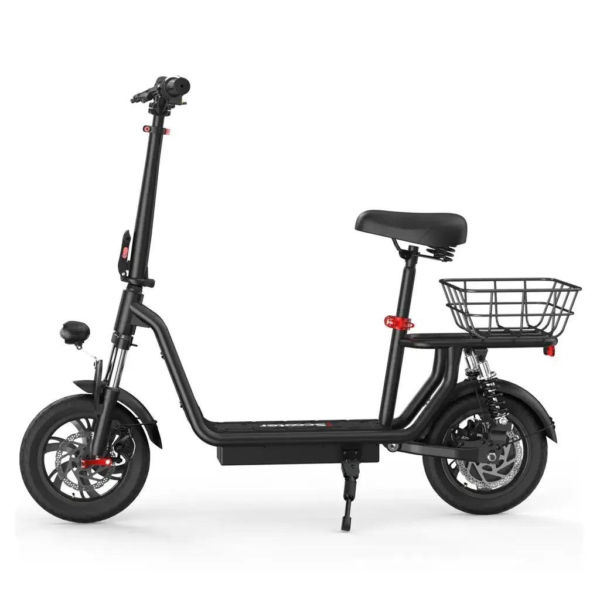
- Battery Range: 18–21 miles (30–35 km)
- Top Speed: 15.6 mph (25 km/h)
- Motor Power: 500 W rear hub
- Weight Capacity: 264 lb (120 kg)
- Charging Time: ~4–6 h
- Scooter Weight: 45 lb (20.4 kg)
PROS
- Seat and rear basket included
- Dual disc brakes for predictable stops
- Front & rear suspension comfort
- 12″ pneumatic tires for grip
- Quick fold for storage/transport
CONS
- Modest top speed by design
- Range varies with load/terrain
- Air tires need pressure checks
- IP rating not listed

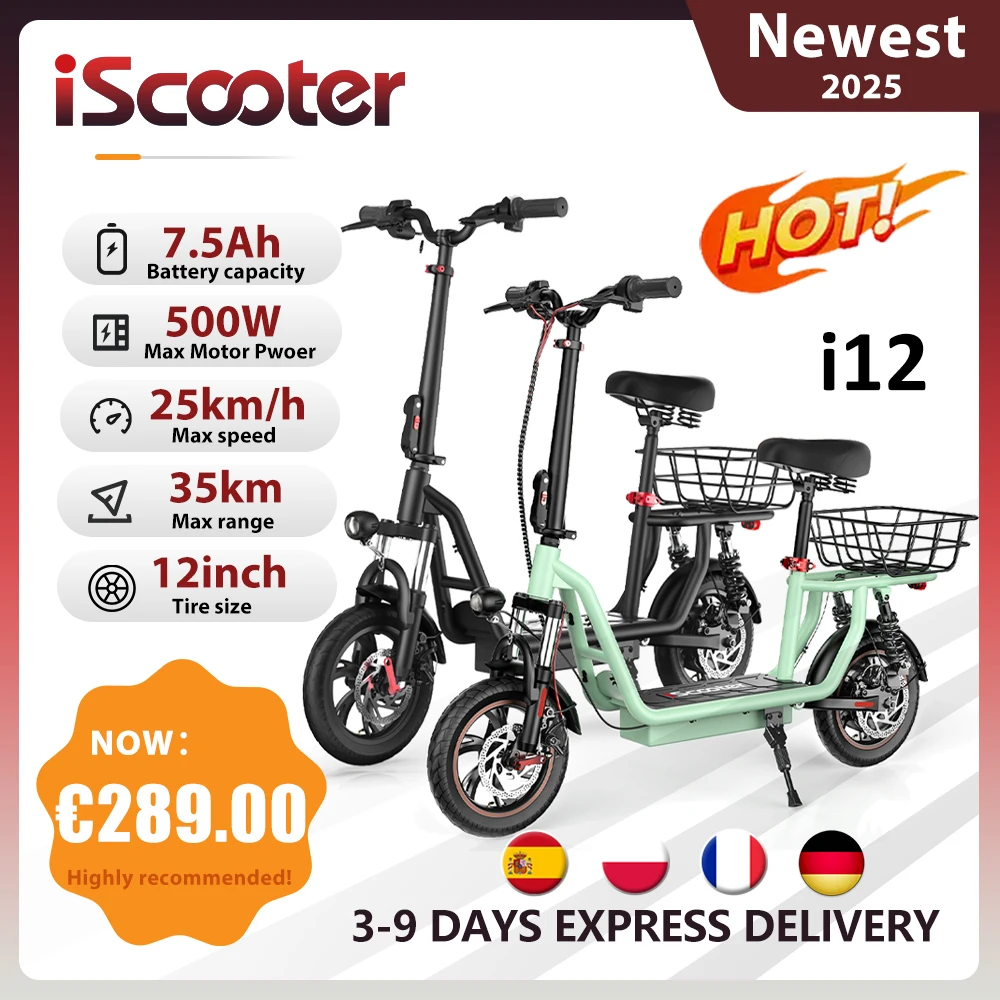



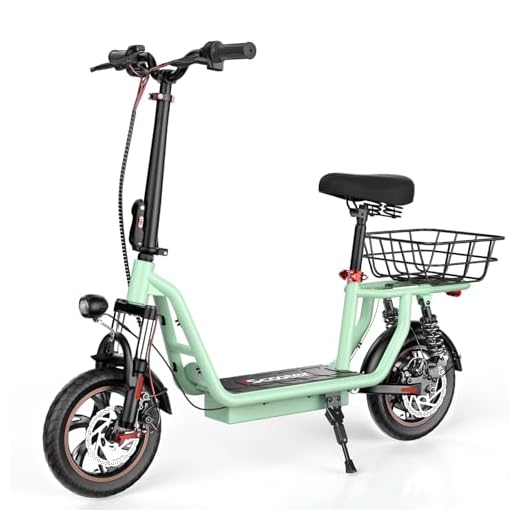
Table of contents
- What Is the iScooter i12?
- How the iScooter i12 Works
- Key Specifications
- Design & Build Quality
- Performance Fundamentals
- Battery, Range & Efficiency
- Ride Quality & Comfort
- Braking & Safety Features
- Portability & Daily Usability
- Maintenance & Care
- Weather & Seasonal Considerations
- iScooter i12 vs Alternatives
- Who the iScooter i12 Is (and Isn’t) For
- FAQs
- Glossary
- Final Notes on Fit and Setup
If you want a simple, seated electric scooter that trades speed for everyday comfort, the iScooter i12 is a practical pick. It pairs 12-inch pneumatic tires with front and rear suspension, a height-adjustable saddle, and a rear cargo basket. With a modest top speed and a focus on stability, it suits short urban trips, campus runs, and errands where ease matters more than outright pace.
What Is the iScooter i12?
The iScooter i12 is a compact, seated commuter scooter designed for predictable rides on mixed city surfaces. It uses a 500 W rear-hub motor, a 36 V 7.5 Ah battery, mechanical disc brakes at both wheels, and a twist throttle. The frame folds at the stem for storage, the handlebar and seat adjust for fit, and the 12-inch air-filled tires help roll through cracks and curbs more smoothly than smaller-wheel kick scooters. Its rated top speed is 15.6 mph (25 km/h) and its rated range is 18–21 miles (30–35 km), which fits short daily commutes and around-town chores.
How the iScooter i12 Works
Motor and controller. A 500 W brushless hub motor sits inside the rear wheel. Because the motor is in the hub, there’s no chain or belt to maintain. Power delivery is managed by an electronic controller that meters current to the motor. Think of it like a dimmer switch for a light: twist gently, and it supplies a little power; twist more, and it feeds more current for stronger acceleration.
Battery. The battery is a 36 V 7.5 Ah pack integrated into the deck assembly. Multiply volts by amp-hours and you get an energy estimate of about 270 Wh. That figure is useful for comparing efficiency and for planning range in different conditions.
Throttle. The i12 uses a twist throttle on the right grip. After a short “arm” of the brake lever (a safety that wakes the controller), you roll on the throttle to move. The response is tuned for beginners, so starts are smooth rather than snappy.
Brakes. Mechanical disc brakes front and rear provide predictable stopping power without hydraulics. Cable-actuated discs are easy to understand and adjust, and they deliver a firm lever feel once the pads are bedded in.
Cockpit and basic electronics. A simple bar-mounted display shows battery bars and status lights. You also get a headlight, a tail/brake light, and a horn for signaling. There’s no app to learn, which keeps the daily routine straightforward.
Key Specifications
| Category | Details |
|---|---|
| General | Model: iScooter i12 • Wheel size: 12 in pneumatic (≈305 mm) • Drive: Rear-wheel hub motor • Age range: 14+ • Max load: 264 lb (120 kg) • Net weight: 45 lb (≈20.4 kg) |
| Performance & Power | Motor: 500 W rear hub • Top speed: 15.6 mph (25 km/h) • Climbing: up to 15% grades (short hills) • Throttle: twist type |
| Battery, Charging & Electrical | Battery: 36 V 7.5 Ah (≈270 Wh, derived) • Charger: DC 42 V 1.5 A • Typical charge time: 5–6 h • AC input: 100–240 V ~ 50/60 Hz • Display: battery bars and status • Lights: front white LED, rear red brake/tail light • Horn: yes |
| Build & Dimensions | Suspension: front and rear dual shock absorbers • Tires: 12 in pneumatic (front & rear) • Unfolded size (L×W×H): 49.6 × 23.6 × 45.6 in (1260 × 600 × 1160 mm) • Folded size (L×W×H): 49.6 × 23.6 × 42.8 in (1260 × 600 × 1087 mm) • “Bike length” reference: 48.8 in (1240 mm) |
| Safety & Control | Brakes: dual mechanical disc (front & rear) • Brake levers: cable-actuated • Reflectivity: rear lighting; passive reflectors may vary by region • Water resistance: not rated; avoid riding in wet conditions |
| Features & Extras | Seat: height-adjustable with quick-release • Rear basket: included (bolt-on) • Handlebar height: adjustable • Kickstand: side-mounted • Cruise Control: not specified • Mobile app: not supported |
| Warranty & Compliance | Warranty: 12 months standard (region-dependent) • Max speed aligns with many local capped limits; always follow local regulations |
Design & Build Quality
The i12’s frame is a compact, step-through layout with a low deck and a long, single-piece handlepost. Because the deck is low and flat, it’s easy to mount and to stabilize your feet before you twist the throttle. The included saddle uses a seatpost with a quick-release collar, so you can raise or lower it on the fly. Similarly, the handlebar clamp allows height adjustment to find a comfortable reach.
Fit-and-finish is utilitarian rather than flashy. Cables are routed along the handlepost, then down toward the fork and frame. The folding latch sits at the base of the stem, and it uses a safety catch before the main lever closes—this helps prevent accidental unlatching. On a new unit, the latch feels snug; if you notice play after months of use, tightening the hinge bolt usually restores a solid lockup.
Up front, the fork holds a 12-inch pneumatic tire and a cable-disc brake. At the rear, a twin-coil shock layout supports the rack and wheel assembly. The basket bolts to the rear rack. Because it’s a bolted accessory, it doesn’t rattle as much as hook-on baskets, and you can remove it if you want a cleaner silhouette. The deck houses the battery box and includes a side kickstand that clears curbs without catching.
The cockpit is simple. A central display shows battery bars, while the right grip is the twist throttle. Separate switches run lighting and the horn. There’s no pairing, no app, and no modes to cycle through, which keeps the learning curve short.
Performance Fundamentals
Acceleration feel. With a 500 W hub and a beginner-friendly controller tune, the i12 eases into motion. Starts are smooth, and mid-range pull is adequate for neighborhood traffic. Because output is capped, it doesn’t surge, which helps new riders stay balanced over bumps or when turning from a stop.
Cruising stability. The combination of 12-inch pneumatic tires and a longer wheelbase than a typical kick scooter gives the i12 a planted feel around 10–15 mph (16–24 km/h). The handlepost is relatively tall, so a small amount of flex is normal; however, once the stem latch is correctly adjusted, the scooter tracks straight and resists twitchiness.
Hill-climb behavior (≈7–10% grades). On short city inclines around 7% with an average rider, the i12 maintains forward pace without drama, though speed will drop. On sustained 10% hills, it will slow further and may require a little patience. If you approach steeper ramps, building a bit of momentum beforehand helps. Because the motor is in the rear hub, traction remains consistent as weight shifts back on climbs.
Battery, Range & Efficiency
The rated range is 18–21 miles (30–35 km). That figure assumes a moderate rider, flat terrain, and mild temperatures. Real-world range varies with rider weight, hills, surface roughness, average speed, and wind. To translate the battery into practical terms, treat the 36 V 7.5 Ah pack as roughly 270 Wh of energy. Light riders cruising gently on flat paths may see energy use near 12 Wh/mi (7.5 Wh/km), while heavier riders at full speed on mixed terrain may approach 18–20 Wh/mi (11–12.5 Wh/km). Those ballpark figures imply a spread from the mid-teens to around 20 miles for many riders, which lines up with the rating when conditions are favorable.
Charging is straightforward. The included 42 V, 1.5 A charger typically refills the pack in 5–6 hours. To maximize battery health, avoid storing the scooter at very low states of charge and try not to leave it sitting full for weeks. In daily use, it’s fine to top up between rides. Temperature also matters: lithium-ion cells prefer cool, dry storage, and charging outside the recommended range can shorten life.
Ride Quality & Comfort
Tires and suspension. The i12’s 12-inch pneumatic tires take the sting out of expansion joints and rough sidewalks. Because these tires have real air volume, you can tune ride feel by pressure. A sensible starting point is about 36 psi (≈2.5 bar) and then adjust 2–4 psi for comfort or load. If you frequently carry groceries in the basket, a slight rear pressure bump helps the tire support weight. The dual-shock suspension adds another layer of isolation. It’s not a long-travel system, yet it filters repetitive chatter and softens curb cuts at reasonable speeds.
Ergonomics. Both the handlebar and the seat adjust. Taller riders can lift the bar to open their chest and reduce wrist angle. Shorter riders can drop the bar and seat to keep elbows relaxed. The saddle is plush enough for neighborhood trips; however, on longer rides you’ll feel more comfortable if you shift your weight occasionally or stand over rough patches to let your legs absorb impacts.
Stem flex and tracking. A long handlepost always carries some flex. On the i12, that flex shows up as a gentle, springy feel if you push hard on the bars. It’s normal and not a sign of failure. Keeping the stem latch tight and the headset preloaded correctly preserves precise steering.
Braking & Safety Features
Mechanical discs. Dual cable-actuated discs give the i12 a familiar bicycle-like lever feel. Initial bite is modest for the first few stops, then it firms up as pads bed against the rotors. Because the brakes are mechanical, routine adjustments are simple: you can take up slack at the lever barrel or at the caliper pinch bolt to keep the lever pull in the sweet spot.
Stopping technique. For the shortest stops, move your weight back, keep elbows soft, and progressively pull both levers. On wet leaves or dusty pavement, start with lighter pressure and increase as the tires hook up. Because the scooter has a rear hub motor and a seated stance, you naturally bias weight rearward as you slow; that helps the rear tire maintain grip.
Lighting and visibility. A front white LED and a red tail/brake light improve evening safety. Even so, reflective clothing or accessories are smart at night. The i12 does not publish an IP rating, and the brand advises against wet-weather riding. As a result, plan your routes with dry pavement in mind.
Portability & Daily Usability
At about 45 lb (≈20.4 kg), the iScooter i12 is liftable for short flights of stairs, but it’s not a featherweight. The stem folds forward, which lowers height but leaves the length unchanged. Because the basket and seatpost remain in place, the folded package is still fairly tall. Nevertheless, it will slide against a garage wall, fit under some desks, or slot lengthwise in many car trunks and hatchbacks. Unfolding is quick: flip the safety, swing the latch, and snap the stem upright until it clicks.
For errands, the bolt-on basket is the star. It keeps a small backpack or groceries off your body, which is more comfortable in warm weather. If you want a sleeker profile, you can remove the basket with basic hand tools. Day to day, a U-lock through the rear wheel and frame is a good habit when parking, and a small cable adds deterrence for the front wheel or the basket.
Maintenance & Care
Keeping the i12 running smoothly doesn’t require special tools. A small hex set, a 10 mm wrench, and a tire pump with a pressure gauge will cover almost everything.
Before each ride (fast checklist).
- Squeeze both brake levers; the pads should bite by mid-pull.
- Check tire pressure; aim near 36 psi (≈2.5 bar), then adjust for comfort and load.
- Make sure the stem latch is fully closed with the safety engaged.
- Confirm that the headlight and tail/brake light work.
- Twist the throttle gently to confirm smooth takeoff.
Every 2–4 weeks (or every ~60 miles / 100 km).
- Retighten the stem hinge and handlebar clamp bolts to remove any play.
- Inspect brake pads and cable tension; adjust at the lever or caliper as needed.
- Check spokes for even tension by plucking them; look for any wobble in the rims.
- Wipe down the deck and battery housing with a damp cloth; avoid sprays near ports.
Every 2–3 months (or every ~300 miles / 480 km).
- Remove and reinstall the basket hardware with a drop of threadlocker if bolts start backing out.
- Inspect tires for cuts and embedded debris; replace inner tubes if punctures repeat.
- Charge the battery to storage level (about 60–80%) if you won’t ride for a few weeks, and store in a cool, dry spot.
Battery care tips.
- Avoid deep discharges to zero; stopping with one bar left is better for longevity.
- Don’t charge below freezing or above hot-garage temperatures.
- Unplug when the charger goes green; leaving it overnight occasionally is fine, but routine over-charging time isn’t ideal.
Weather & Seasonal Considerations
Because the scooter isn’t water-rated, treat wet roads as off-limits. Rain, puddles, and road salt can damage electronics and reduce traction dramatically. In summer heat, tire pressures rise as air expands; check pressure more often and consider dropping a couple psi for comfort. In winter, range shrinks because cold slows battery chemistry. If you must ride in the cold, store the iScooter i12 indoors, then head out immediately after unplugging so the pack starts warm. As always, slow down on dusty or leaf-covered paths and extend braking distances.
iScooter i12 vs Alternatives
Against classic stand-up commuters. If you compare it to typical 8.5–10 inch, stand-up commuters, the i12 trades top-end speed for stability and convenience. The seat and basket make it feel more like a small urban runabout, while the bigger tires and twin shocks smooth rough paths better than stiff, small-wheel decks. Riders who prefer a stand-up layout with a sportier feel can consider the JOYOR F3 as a compact alternative.
Against performance scooters. Versus high-power models, the i12 is slower and has less range. However, it weighs less and is easier to store. Maintenance is also simpler because there are no hydraulic brakes or dual-motor systems to service.
Against off-road models. Compared with knobby-tire, long-travel scooters, the i12 is built for pavement. It’s not the right tool for trails, but it’s quieter, cheaper to maintain, and more approachable for new riders.
Where the i12 excels. Neighborhood errands, short commutes, campus shuttle rides, and last-mile connections to transit. The ride is calm, the cockpit is simple, and the seated position reduces fatigue in stop-and-go traffic.
Who the iScooter i12 Is (and Isn’t) For
Great for:
- Students, apartment dwellers, and office workers with short, predictable commutes.
- Shoppers and errand-runners who want a rear basket to carry small loads.
- New riders who value stability, a seated stance, and gentle throttle response.
- Multi-modal travelers who need a foldable scooter for the car trunk or train.
Not ideal for:
- Riders wanting speeds above neighborhood limits.
- Long-distance commuters who need 25+ miles (40+ km) per charge.
- Wet-weather riders, since the scooter isn’t water-rated.
- Heavy trail or gravel users who need off-road tires and long-travel suspension.
FAQs
1) How fast does it go, and does it feel stable at that speed?
It’s rated to about 15.6 mph (25 km/h). Thanks to the 12-inch pneumatic tires and twin shocks, it feels composed at typical city speeds, especially on smooth paths.
2) What real-world range should I expect?
The rating is 18–21 miles (30–35 km). Your range depends on rider weight, terrain, temperature, and average speed. Expect more on flat paths at gentle pace and less on hilly routes or in cold weather.
3) Does it have regenerative braking or an electronic brake?
No regenerative system is listed. The scooter uses mechanical disc brakes at both wheels. They’re easy to adjust and provide consistent stopping power.
4) Can I ride it in the rain?
It doesn’t publish an IP rating, and the brand advises against wet riding. Avoid heavy rain, puddles, and salty winter slush to protect the electronics and to keep traction.
5) What tire pressure should I run?
A sensible starting point is about 36 psi (≈2.5 bar). Adjust a little up for heavier loads or a little down for comfort on rough paths, while staying within the tire’s sidewall range.
6) Does the handlebar and seat adjust for different riders?
Yes. The handlebar height is adjustable, and the saddle uses a quick-release seatpost, so you can raise or lower both quickly.
7) Where can I find a concise “iScooter i12 overview”?
You’re reading one: this page summarizes the core features, specifications, riding behavior, and care tips in a single guide.
Glossary
- Amp-hour (Ah): A measure of charge capacity. Multiply Ah by pack voltage to estimate energy in watt-hours.
- Watt-hour (Wh): Energy capacity; useful for comparing range potential across scooters.
- Controller: The electronics that regulate current from the battery to the motor, shaping throttle response.
- Brushless hub motor: A motor built into the wheel hub; it needs little maintenance and runs quietly.
- Regen (regenerative braking): A system that converts braking into charge; not listed for this model.
- Stem flex: The springy feel in a tall handlepost under load; normal within small amounts.
- IP rating: Ingress protection rating for water and dust. The i12 does not publish one.
- Pneumatic tire: An air-filled tire that cushions bumps and can be pressure-tuned for comfort or load.
- Disc brake (mechanical): A rotor and caliper system actuated by cables; easy to adjust with basic tools.
- Hill grade: The steepness of a climb expressed as a percentage; 10% equals 10 m up for every 100 m forward.
- Watt (W): A unit of power; higher wattage motors can sustain more torque and speed.
- Throttle (twist): A rotating grip that controls power; roll on to accelerate, roll off to slow.
- Suspension (dual shock): Front and rear coil-over units that reduce road chatter and improve comfort.
- Deck: The platform you stand on; in this scooter, it also houses the battery.
- Load rating: The maximum combined weight of rider and cargo that the scooter is designed to carry.
Final Notes on Fit and Setup
A calm, predictable setup makes the iScooter i12 shine. Start by dialing handlebar and saddle height so your elbows are slightly bent and your knees clear the bar at full steering lock. Next, set tire pressures and bed the brakes with a series of firm stops from moderate speed. Finally, practice a few hill starts and low-speed turns in a quiet lot. With those basics in place, you’ll feel how the big tires and seated stance reduce fatigue, and you’ll appreciate how the simple controls get out of the way of your ride.
Specifications
General
| Model The Model specifies the exact version or name of the scooter. It helps identify its unique design, features, and specifications within the manufacturer’s product line. Knowing the model makes it easier to compare options, find compatible accessories, or look up support information. | i12 |
| Brand The Brand identifies the manufacturer or company that designs and produces the scooter. A trusted brand is a sign of quality, reliability, and good customer support. Well-known brands often have higher standards for safety, performance, and after-sales service, giving you more confidence in your purchase. | iScooter |
| Release Date The Release Date indicates when the scooter model was officially launched on the market. This helps you know how current the design, technology, and features are. A newer release date often means updated components, improved performance, and the latest safety or smart features. | 17 November 2025 |
| Recommended Age Recommended Age indicates the minimum age range that the scooter is designed for, based on safety, size, and ease of use. Following the recommended age helps ensure that riders can handle the scooter’s speed, weight, and controls comfortably and safely. Always check local laws and use protective gear, especially for younger riders. | Recommended 14+ |
Performance & Power
| Motor Power (Wattage) What it means: The motor power, measured in watts (W), shows how strong the scooter’s electric motor is. Why it matters: Higher wattage usually means better acceleration, more torque, and improved performance on hills or rough terrain. For example, a 250W motor is good for flat city roads and light riders, while a 500W or 1000W motor provides more power for faster speeds or climbing steep inclines. | 500 W rear hub motor |
| Top Speed The Top Speed indicates the maximum speed that the scooter can reach under optimal conditions. It’s usually measured on level ground with a fully charged battery and an average rider weight. A higher top speed allows you to travel longer distances faster, but always ensure you ride within legal speed limits and your personal comfort zone for safety. | 15.6 mph (25 km/h) |
| Battery Capacity Battery Capacity refers to the total amount of energy the scooter’s battery can store, usually measured in ampere-hours (Ah) or watt-hours (Wh). A higher battery capacity means you can ride longer distances on a single charge, reducing the need for frequent recharging. Keep in mind that actual range can vary depending on rider weight, terrain, speed, and weather conditions. | 36 V 7.5 Ah |
| Estimated Range per Charge The Estimated Range per Charge indicates the average distance the scooter can travel on a single full battery charge. This range is calculated under optimal conditions, such as flat terrain, moderate speed, and average rider weight. Real-world range may vary depending on riding style, terrain, weather, and load. A longer range means fewer recharges and greater freedom for longer trips. | 18–21 miles (30–35 km) |
| Hill Climb Ability Hill Climb Ability describes the maximum incline or slope that the scooter can handle while maintaining stable performance. It’s typically expressed as a percentage or in degrees. A higher hill climb rating means the scooter can tackle steeper hills without losing too much speed or power. Actual climbing performance may vary based on rider weight, battery charge, and terrain conditions. | 15% grade |
| Drive System The Drive System refers to how power from the motor is delivered to the wheels. Electric scooters typically use either a hub motor (directly integrated into the wheel) or a chain/belt drive system. A high-quality drive system ensures smooth acceleration, efficient power transfer, and low maintenance. The choice of drive system affects performance, noise level, and overall ride experience. | Rear wheel drive (RWD) |
Charging & Electrical
| Charging Time Charging Time indicates how long it takes to fully recharge the scooter’s battery from empty to 100% using the standard charger provided. Faster charging means less downtime and more time on the road. Actual charging time may vary slightly depending on battery capacity, charger output, and environmental conditions. | Approx. 4–6 hours |
| Battery Type Battery Type refers to the specific technology used in the scooter’s battery, which affects performance, lifespan, weight, and charging time. Most modern electric scooters use high-quality lithium-ion (Li-ion) batteries because they offer a good balance of energy density, durability, and low maintenance. A reliable battery type ensures consistent power delivery and longer riding ranges. | Lithium-ion pack |
| Removable Battery A Removable Battery means the battery pack can be easily detached from the scooter for convenient charging and replacement. This feature allows you to charge the battery separately, swap it with a spare for extended range, or securely store it indoors in extreme weather. Removable batteries add flexibility and make it easier to keep your scooter powered up wherever you are. | Non-removable internal battery (fixed pack) |
| Regenerative Braking Regenerative Braking is an energy-saving feature that converts some of the energy normally lost during braking back into battery power. When you slow down or brake, the motor works in reverse to generate electricity, which helps extend the scooter’s range and improves overall efficiency. This system also reduces wear on traditional brake components, leading to lower maintenance over time. | Not specified (regen not listed) |
| Lighting Lighting refers to the built-in front and rear lights that enhance visibility and safety when riding in low-light conditions or at night. Good lighting helps you see the road ahead and ensures that other road users can see you. Many scooters include LED headlights, taillights, and sometimes brake lights or side reflectors for added safety and compliance with local traffic regulations. | Front white light + red tail light |
Build & Dimensions
| Scooter Weight Scooter Weight refers to the total weight of the scooter when fully assembled, including the battery. This affects how easy it is to carry, lift, and store the scooter when not in use. A lighter scooter is more portable and convenient for commuting, especially if you need to carry it upstairs or onto public transport. Keep in mind that a sturdy frame and quality components may add to the weight but also contribute to better durability and ride stability. | 45 lb (20.4 kg) |
| Maximum Rider Weight Maximum Rider Weight indicates the highest rider weight that the scooter is designed to safely support while maintaining optimal performance and stability. Staying within this limit helps ensure reliable acceleration, braking, and climbing ability, and it protects the frame, suspension, and motor from excessive strain. Exceeding the recommended limit may reduce performance and increase wear on components. | 264 lb (120 kg) |
| Deck Size Deck Size refers to the dimensions of the scooter’s standing platform. A wider and longer deck provides more foot space, allowing you to stand comfortably and adjust your stance while riding. A well-sized deck improves balance and stability, especially on longer rides or at higher speeds. Compact decks, on the other hand, help keep the scooter lightweight and portable. | Seat + rear basket; low deck |
| Handlebar Height Handlebar Height refers to the distance from the deck to the handlebars, which affects your riding posture and comfort. An appropriate handlebar height helps you maintain good balance, reduces strain on your back and arms, and makes steering more comfortable. Some scooters have adjustable handlebars to fit riders of different heights, while others have a fixed height for a streamlined design. | Fixed bar height |
| Folding Mechanism The Folding Mechanism describes how easily and securely the scooter can be folded for carrying and storage. A well-designed folding system lets you quickly collapse the scooter into a compact size, making it convenient to transport on public transit, store under a desk, or fit into a car trunk. Look for sturdy latches and safety locks to ensure the scooter stays firmly in place when folded or unfolded. | Quick fold |
| Dimensions Folded Dimensions indicate the size of the scooter when it’s fully folded. This measurement shows how much space the scooter will take up when stored or carried, making it easier to check if it will fit in your car trunk, under a desk, or in a closet. Compact folded dimensions are ideal for commuters who need to bring their scooter on public transport or store it in tight spaces. | Length 48.8 in (unfolded); folded size not specified |
| Material Material refers to the primary construction materials used for the scooter’s frame and key components. High-quality materials like aircraft-grade aluminum, reinforced steel, or durable composites provide strength, stability, and a lighter overall weight. A sturdy material ensures the scooter can handle daily wear and tear while maintaining safety and performance. | Not specified |
Safety & Control
| Brake Type(s) Brake Type(s) describe the braking systems the scooter uses to help you slow down or stop safely. Common brake types include mechanical brakes (like drum or disc brakes), electronic brakes, and foot brakes. Many scooters combine multiple braking systems for added safety and shorter stopping distances. The type and quality of brakes affect your control, especially when riding at higher speeds or on slopes. | Dual disc (mechanical) |
| Suspension Suspension refers to the system that absorbs shocks and vibrations while riding, providing a smoother and more comfortable ride over uneven or rough surfaces. Scooters may have front suspension, rear suspension, or dual suspension for better shock absorption and stability. Good suspension helps reduce rider fatigue and improves control, especially when riding on bumpy roads or off-road paths. | Front & rear dual suspension |
| Tire Type Tire Type refers to the kind of tires the scooter uses, which directly affects ride comfort, traction, and maintenance. Common types include solid (airless) tires, pneumatic (air-filled) tires, or hybrid options. Pneumatic tires offer better shock absorption and a smoother ride on rough surfaces, while solid tires are puncture-proof and require less upkeep. The right tire type helps ensure safe handling and a comfortable ride in different conditions. | Pneumatic tires |
| Tire Size Tire Size indicates the diameter and width of the scooter’s tires, which affect ride comfort, stability, and how well the scooter handles different terrains. Larger tires generally offer better shock absorption and a smoother ride over bumps and rough surfaces, while smaller tires keep the scooter lighter and more portable. Choosing the right tire size helps ensure a balance between agility and comfort. | 12-inch |
| Kickstand The Kickstand is a built-in stand that allows you to park your scooter upright when it’s not in use. A sturdy kickstand keeps the scooter stable and prevents it from tipping over, protecting it from scratches and damage. It also makes storing and accessing your scooter more convenient, whether you’re at home, work, or on the go. | Side kickstand |
| Water Resistance Rating Water Resistance Rating indicates how well the scooter is protected against water and moisture, usually shown as an IP (Ingress Protection) rating. This rating helps you understand whether the scooter can handle light rain, splashes, or wet roads without damage. While most scooters are not fully waterproof, a good water resistance rating adds peace of mind when riding in changing weather conditions. Always avoid deep puddles or submerging the scooter to protect its electrical components. | Not specified |
Features & Extras
| Display/Console The Display (or Console) shows important real-time information about your ride, helping you monitor your scooter’s status at a glance. Typical displays show speed, battery level, distance traveled, and riding mode. Some models also include additional features like Bluetooth connectivity, app integration, or backlighting for better visibility at night. A clear and easy-to-read display enhances safety and convenience on every trip. | LED battery level indicator display (bar-style). |
| Ride Modes Ride Modes refer to the different speed and power settings you can choose to match your riding style or road conditions. Common modes include eco for maximum range and energy efficiency, standard for everyday balance, and sport or turbo for higher speed and stronger acceleration. Switching between ride modes allows you to customize performance, conserve battery, and ride safely in various environments. | No selectable riding modes mentioned in official materials. |
| Smart App Connectivity Smart App Connectivity lets you pair your scooter with a dedicated mobile app via Bluetooth. Using the app, you can monitor real-time ride stats like speed, battery level, and range, adjust settings such as ride modes or cruise control, lock the scooter for added security, and sometimes receive firmware updates. This feature adds convenience and allows you to personalize your riding experience right from your smartphone. | Minibot app noted in iScooter FAQ for enabling Zero Start. |
| Anti-Theft System The Anti-Theft System helps protect your scooter from unauthorized use or theft. This feature can include built-in alarms, electronic motor locks, GPS tracking, or remote locking through a mobile app. A good anti-theft system provides peace of mind when parking your scooter in public spaces, adding an extra layer of security to safeguard your investment. | Keyed ignition (turn key to power on/off). |
| Cruise Control Cruise Control allows you to maintain a steady speed without continuously holding the throttle. This feature makes longer rides more comfortable by reducing hand fatigue and providing a smoother, more relaxed riding experience — especially on flat, open roads or bike lanes. For safety, cruise control can usually be easily activated or deactivated while riding. | Cruise control not advertised by the manufacturer. |
| Accessories Included Accessories Included lists the additional items that come with the scooter to enhance your riding experience and convenience. Common accessories may include a charger, kickstand, bell, lights, phone holder, or carrying strap. These extras add value by making your scooter safer, easier to use, and ready to ride straight out of the box. | In the box: i12 scooter, 42V 1.5A charger, T Allen wrench, combination wrench, inner tube, user manual. |
Warranty & Compliance
| Warranty Period The Warranty Period indicates how long the manufacturer guarantees the scooter against defects in materials and workmanship under normal use. A good warranty provides peace of mind, showing the brand’s confidence in its product quality. Always check what parts are covered, such as the frame, battery, and motor, and follow the maintenance guidelines to keep your warranty valid. | 12 months (region-dependent) |
| Certifications Certifications confirm that the scooter meets specific safety, quality, and environmental standards set by recognized organizations or regulatory bodies. Common certifications may include CE, RoHS, UL, or other local compliance marks, depending on your region. These certifications ensure that the scooter is manufactured to high standards and is safe and legal to use in your country. | Local micromobility compliance |
Price Comparison








